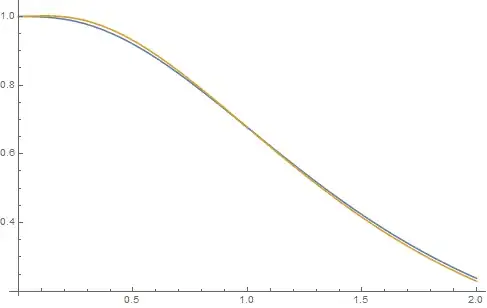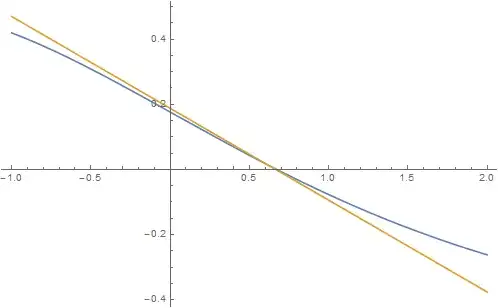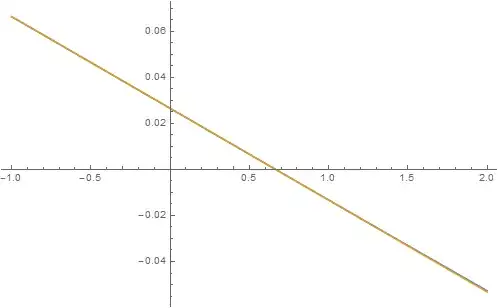If we let
$$
p_n(z) = \sum_{k=1}^{n} \frac{z^k}{k!},
$$
then the limit linked by Lucian in the comments can be written as
$$
\frac{p_n(n)}{\exp(n)} = \frac{1}{2} + o(1) \qquad \text{as } n \to \infty, \tag{1}
$$
and as Aryabhata notes this can be found in Donald J. Newman's book A Problem Seminar. This limit is a special case of the following, due to Donald J. Newman and Theodore J. Rivlin${}^1$:
$$\DeclareMathOperator{erfc}{erfc}
\frac{p_n(n+w\sqrt{n})}{\exp(n+w\sqrt{n})} = \frac{1}{2}\erfc\!\left(\frac{w}{\sqrt{2}}\right) + o(1) \qquad \text{as } n \to \infty, \tag{2}
$$
where $\erfc$ is the complementary error function and the error term $o(1)$ is uniform with respect to $w$ for $w$ in compact subsets of $\mathbb C$. Indeed, since $\erfc(0) = 1$, limit $(1)$ follows from limit $(2)$ by setting $w=0$.
Now, the expression in your question is obtained by setting $w = z/\sqrt{n}$, but the asymptotic
$$
\begin{align}
\frac{p_n(z+n)}{\exp(z+n)} &= \frac{1}{2}\erfc\!\left(\frac{z}{\sqrt{2n}}\right) + o(1) \\
&= \frac{1}{2} - \frac{z}{\sqrt{2\pi n}} + O(n^{-1}) + o(1) \qquad \text{as } n \to \infty, \tag{3}
\end{align}
$$
where in the second line we've used the Maclaurin series for $\erfc$, doesn't given us enough information to determine the $o(\sqrt{n})$ roots of your equation
$$
\frac{p_n(z+n)}{\exp(z+n)} = \frac{1}{2}.
$$
Indeed, after substituting this into $(3)$ we see that to first order they must satisfy
$$
\frac{z}{\sqrt{2\pi n}} = o(1) \qquad \text{as } n \to \infty,
$$
and we evidently need more information how this $o(1)$ error term balances with $1/\sqrt{n}$. In other words, we need more accurate information about the rate of convergence to the limit in $(2)$.
This information was obtained by Kriecherbauer et al.${}^2$ using a version of the Riemann-Hilbert method. After some massaging their Theorem 3.3 gives us the asymptotic
$$
\frac{p_n(n\zeta)}{\exp(n\zeta)} = \frac{1}{2}\erfc\!\left(\sqrt{n\varphi(\zeta)}\right) + \frac{(n\zeta e^{-\zeta})^n}{n!} - \frac{\exp(-n\varphi(\zeta))}{3\sqrt{2\pi n}} + o(n^{-1/2}), \tag{4}
$$
where
$$
\varphi(\zeta) = \zeta - 1 - \log\zeta
$$
and the correct branch of $\sqrt{}$ must be chosen, which is valid in the limit $n \to \infty, \zeta \to 1$. One can check that this is a very good approximation even for small values of $n$. Here's a plot of the left-hand side of $(4)$ in blue versus the right-hand side in orange for $0 < \zeta < 2$ and $n=2$:

Substituting $\zeta = 1+z/n$ then expanding everything in series and collecting like terms yields
$$
\frac{p_n(z+n)}{\exp(z+n)} = \frac{1}{2} + \frac{2-3z}{3\sqrt{2\pi n}} + o(n^{-1/2}) \qquad \text{as } n \to \infty, \tag{5}
$$
where the error holds uniformly for $z = o(\sqrt{n})$. Below is a plot of $e^{-z-n} p_n(z+n) - 1/2$ in blue versus $(2-3z)/3\sqrt{2\pi n}$ in orange for $0 < z < 1$ and $n=2$:

and for $n=100$:

It then follows that the $o(\sqrt{n})$ roots of the equation
$$
\frac{p_n(z+n)}{\exp(z+n)} = \frac{1}{2}
$$
must satisfy
$$
0 = \frac{2-3z}{3\sqrt{2\pi n}} + o(n^{-1/2}) \qquad \text{as } n \to \infty,
$$
and solving for $z$ yields
$$
z = \frac{2}{3} + o(1) \qquad \text{as } n \to \infty.
$$
It's worth noting that your equation has many complex roots which are $\Theta(\sqrt{n})$ and are picked up by limit $(2)$ above, and many which are $\Theta(n)$ which require a different asymptotic to detect.
D. J. Newman and T. J. Rivlin
The zeros of the partial sums of the exponential function
J. Approx. Theory 5 (1972), 405–412.
T. Kriecherbauer, A. B. J. Kuijlaars, K. D. T.-R. McLaughlin, and P. D. Miller
Locating the zeros of partial sums of $e^z$ with Riemann-Hilbert methods
Integrable Systems and Random Matrices, Contemp. Math., vol. 458, Amer. Math. Soc., Providence, RI, 2008, pp. 183–195.
arXiv link


